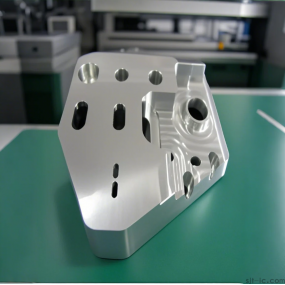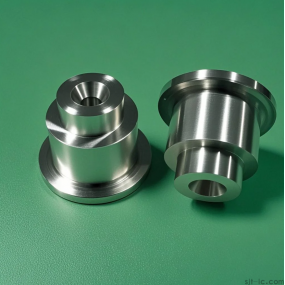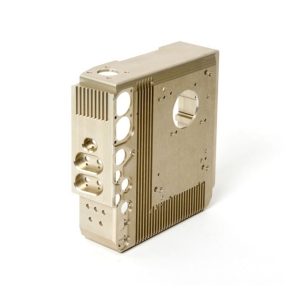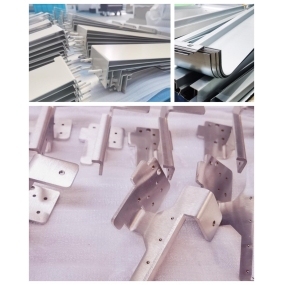💰 Cost Control for CNC High-Speed Machine Mirror Finishing: Practical Tips to Save 30%
As a technical blogger with years of experience in the manufacturing industry, I am often asked: "CNC mirror finishing offers excellent quality, but what if the cost is too high?" 🤔 This is not only a pain point for business owners but also a key factor affecting competitiveness. In fact, by optimizing processes and strategies, it is entirely possible to significantly reduce costs while ensuring quality. Today, I will combine practical experience to help you solve the cost problem!

🔍 Where Does the Cost Come From? First, Analyze the Core Components
The cost of CNC high-speed machine mirror finishing is not determined by a single factor but by the accumulation of multiple links:
- Equipment Energy Consumption and Depreciation: The electricity consumption and maintenance costs of high-precision machine tools account for approximately 20-30% of the total cost.
- Tool Wear: Diamond tools are durable but have a high unit price. The cost of tool replacement during long-term use can reach 15-25%.
- Material Scrap Rate: Processing errors or improper parameters lead to waste materials, resulting in a 10-20% waste of material costs.
- Labor and Time: Skilled operators command high salaries, and mirror finishing requires multiple processes, with labor-hour costs accounting for more than 30%.
💡 My View: Cost control is not about blindly "lowering prices" but about reducing waste through technical optimization. For example, although high-performance tools require a higher initial investment, they can save more on replacement costs in the long run.
⚙️ Four Major Cost-Reduction Strategies: From Process to Management
1. Optimize Tool Selection and Usage
Diamond tools are the first choice for mirror finishing, but their costs can be reduced through the following methods:
- Extend Tool Life: By adopting coating technology and regular regrinding, a single diamond tool can be reground 6-15 times, reducing the frequency of new tool purchases.
- Match Materials with Tools: Tool wear is minimal when processing aluminum, while stainless steel requires tools with higher hardness to avoid wear caused by improper use.
2. Refine the Management of Processing Parameters
Improper parameter settings not only affect quality but also directly increase costs:
- Cutting Speed and Feed Rate: For example, when performing mirror finishing on iron parts, controlling the spindle speed at 10,000-20,000 r/min and the feed rate at 300-500 mm/min can reduce tool load and energy consumption.
- Adopt a Constant Material Removal Rate: Avoid sudden load changes through programming strategies (such as trochoidal milling) to reduce the scrap rate.
3. Reduce Scrap and Rework
Scrap is an invisible killer of costs:
- Real-Time Monitoring Technology: Utilize the online detection function of the CNC system to adjust immediately when deviations are found during processing, avoiding batch scrapping.
- Standardize the Process Flow: Phased operations from rough machining to finishing (e.g., semi-finishing first, then mirror finishing) can improve consistency and reduce errors.
4. Automation and Intelligent Upgrades
Investing in automation saves labor and effort in the long run:
- CNC Automated Processing: Reduce manual intervention, lower salary costs, and increase efficiency by more than 30%.
- Predictive Maintenance: Analyze equipment status through data collection, replace parts in advance, and avoid downtime losses.
🚀 Exclusive Data and Insights: Why Do These Methods Work?
Based on my project experience, an auto parts factory achieved the following results by integrating the above strategies:
- 32% Cost Reduction: Mainly due to the extended tool life (40% reduction in replacements) and the decreased scrap rate (from 15% to 5%).
- 20% Shorter Working Hours: Processing speed increased after parameter optimization, while quality remained stable.
💎 Core Insight: Cost control is a systematic project that requires the integration of technology, management, and data. For example, "tool costs" may seem fixed, but they can be converted into variable costs through regrinding and selection optimization. In addition, when creating content for a new website to improve search rankings, focusing on such practical pain points (e.g., "cost control") makes it easier to attract targeted users and increase conversion rates.
❓ FAQ: Quick Q&A
Q: Is it necessary to use high-priced equipment for mirror finishing?
A: Not at all! Medium-precision machine tools can also produce high-quality results through parameter optimization and tool management; the key is process adaptation.
A Final Thought: The future competition in the manufacturing industry will depend on the balance between lean costs and quality. Although CNC mirror finishing is high-end, small and medium-sized enterprises can also easily master it through intelligent upgrades. If you have more cost-related problems, feel free to communicate! 🤝


 Spanish
Spanish Arabic
Arabic French
French Portuguese
Portuguese Belarusian
Belarusian Japanese
Japanese Russian
Russian Malay
Malay Icelandic
Icelandic Bulgarian
Bulgarian Azerbaijani
Azerbaijani Estonian
Estonian Irish
Irish Polish
Polish Persian
Persian Boolean
Boolean Danish
Danish German
German Filipino
Filipino Finnish
Finnish Korean
Korean Dutch
Dutch Galician
Galician Catalan
Catalan Czech
Czech Croatian
Croatian Latin
Latin Latvian
Latvian Romanian
Romanian Maltese
Maltese Macedonian
Macedonian Norwegian
Norwegian Swedish
Swedish Serbian
Serbian Slovak
Slovak Slovenian
Slovenian Swahili
Swahili Thai
Thai Turkish
Turkish Welsh
Welsh Urdu
Urdu Ukrainian
Ukrainian Greek
Greek Hungarian
Hungarian Italian
Italian Yiddish
Yiddish Indonesian
Indonesian Vietnamese
Vietnamese Haitian Creole
Haitian Creole Spanish Basque
Spanish Basque











